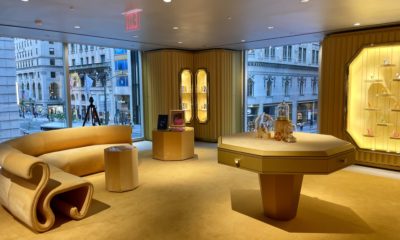When the recession hit in late 2008, high-end retailers had some decisions to make. Should they retain their impractically high prices as a way to retain their luxury status? Or, should they begin to moderate prices, to better approach a consumer group that now had about 10 percent unemployment?
One of those luxury retailers we applauded for standing its ground was Tiffany. So imagine our surprise when the gold standard of gold standards was taken to task recently by The Wall Street Journal for, of all things, courting the (eww!) middle market of jewelry shoppers.
Or, as The Journal characterized it, Tiffany has “an addiction to low-price items.” The villain in the piece, according to The Journal report, is silver.
“[Tiffany’s] mainstay jewelry category, which is mostly silver, accounted for 30 percent of group sales, roughly the same level it has been for the past several years. Items in that category sold for an average of $260 in 2012, compared with tens of thousands of dollars for many other items sold in the same boutiques.”
Contrasting that is Cartier, which “sells few jewelry items for less than $2000 but has managed to become extremely profitable on high-end merchandise.”
“What Tiffany lacks is an atmosphere of exclusivity to support sales of more expensive items,” writes WSJ reporter John Jannarone. “Unlike a Cartier boutique, where less expensive items may not even be displayed, Tiffany stores have enough affordable items to attract hordes of customers who can't afford its more lavish merchandise.”
Advertisement
Jannarone posits that “to capture more ultra-rich customers, it probably needs to let go of some less wealthy shoppers.”
Is it, in fact, a losing policy? It apparently was in Japan, where “Tiffany ran into trouble . . . in the late 1990s when it sold too many low-price items and the brand lost its cachet; the company failed to generate positive same-store sales in Japan for nearly a decade.”
But here in the U.S., as Jannarone himself acknowledges, “affordable items also are a smart way to introduce the brand to women while they are still children or teenagers, paving the way for a lifetime of sales.”
And, he writes, “Tiffany can use a modest amount of silver but attract customers by using a recognizable logo or packaging merchandise in its trademark blue box.”
Ah, yes, the blue box. All the rest is pretty arcane, gem talk. Maybe Bulgari and Cartier do carry more prestige, but the Tiffany blue box is the power of the brand. It stands for something very, very difficult to replicate. And like all smart retailers, Tiffany knows who it is.
Right, Holly?
Advertisement


 Headlines2 weeks ago
Headlines2 weeks ago
 Headlines1 week ago
Headlines1 week ago
 Headlines1 week ago
Headlines1 week ago
 Headlines4 days ago
Headlines4 days ago
 Headlines7 days ago
Headlines7 days ago
 Eric Feigenbaum3 days ago
Eric Feigenbaum3 days ago
 Designer Dozen1 week ago
Designer Dozen1 week ago














